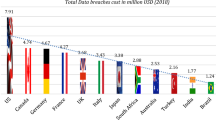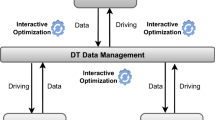Abstract
Object-Relational Databases have been implemented largely and thus, there is urgent need to protect them from potential misuse. Digital watermarking is considered as technological protection measure that deters the attempts to plagiarize or distort databases. Prior work focused primarily on protection of Relational Databases by digital watermarking. However, Object-Relational Databases seem to have escaped the attention of researchers. In this research work, we propose the framework for a novel, generic watermarking technique for ORDBs with a view to incorporate Ownership and Integrity protection. The software developed on the basis of this model is called WORD – Watermarking Object Relational Databases. To the best of our knowledge, this is for the first time that a complete model for watermarking ORDBs has been developed. To deal with changing security aspects with time, strategy pattern is adopted while implementing the watermarking model WORD. The use of strategy pattern designs incorporates flexibility and scalability in our model. Robustness and integrity of proposed system has been proved theoretically as well as practically by various experiments.














Similar content being viewed by others
References
Agarwal N, Singh AK, Singh PK (2019) Survey of robust and imperceptible watermarking. Multimed Tools Appl:1–31. https://doi.org/10.1007/s11042-018-7128-5
Agrawal R, Haas PJ, Kiernan J (2003) Watermarking relational data: framework, algorithms and analysis. VLDB J 12(2):157–169
Barrodale Computing Services Ltd. (BCS). http://www.barrodale.com/watertwapage/
Bashir T, Usman I, Albesher A, Almejalli KA, Naqvi SS (2019) GP based smart reversible watermarking of depth image based rendering for stereoscopic images. Multimed Tools Appl:1–20
Bhattacharya S, Cortesi A (2009) A distortion free watermark framework for relational databases. In: International conference on software and data technologies, vol 2, pp 229–234
Chen L, Zhao J (2018) Contourlet-based image and video watermarking robust to geometric attacks and compressions. Multimed Tools Appl 77(6):7187–7204
Farfoura ME, Horng SJ, Lai JL, Run RS, Chen RJ, Khan MK (2012) A blind reversible method for watermarking relational databases based on a time-stamping protocol. Expert Syst Appl 39(3):3185–3196
Halder R, Pal S, Cortesi A (2010) Watermarking techniques for relational databases: survey, classification and comparison. J Univ Comput Sci 16(21):3164–3190
Hoffer JA, Venkataraman R, Topi H (2010) Modern database management, 11th edn. Pearson, Boston
Hypergeometric distribution. http://stattrek.com/probability-distributions/hypergeometric.aspx
Kamel I (2009) A schema for protecting the integrity of databases. Comput Secur 28:698–709
Kerckhoffs A (1883) La cryptographiemilitaire. Journal des sciences militaries 9(1):5–83
Khan A, Husain SA (2013) A fragile zero watermarking scheme to detect and characterize malicious modifications in database relations. Sci World J 2013, Article ID 796726:1–16
Khanduja V (2017) Database watermarking, a technological protective measure: perspective, security analysis and future directions. JISA 37:38–49 ISSN: 2214-2126. Elsevier
Khanduja V, Chakraverty S (2018) Fragile watermarking of decision system using rough set theory. Arab J Sci Eng:1–13
Khanduja V, Chakraverty S, Verma OP, Singh N (2014) A scheme for robust biometric watermarking in web databases for ownership proof with identification. In: International conference on active media technology. Springer, Cham, pp 212–225
Khanduja V, Verma OP, Chakraverty S (2015) Watermarking relational databases using bacterial foraging algorithm. Multimed Tools Appl 74(3):813–839
Khanduja V, Chakraverty S, Verma OP (2016) “Ownership and tamper detection of relational data: framework, techniques and security analysis”, published as the chapter in the book titled: embodying intelligence in multimedia data hiding at Science Gate Publishing, pp 21–36. https://doi.org/10.15579/gcsr.vol5. ISBN 978-618-81418-8-9 (print) - ISBN 978-618-81418-9-6 (e-book)
Khanduja V, Chakraverty S, Verma OP (2016) Enabling information recovery with ownership using robust multiple watermarks. JISA 29:80–92
Li Y, Guo H, Jajodia S (2004) Tamper detection and localization for categorical data using fragile watermarks. In: ACM workshop on digital rights management, pp 73–82
Li Y, Swarup V, Jajodia S (2005) Fingerprinting relational databases: schemes and specialties. IEEE Trans Dependable Secure Comput 2(1):34–45
Lie W, Chang L (2006) Robust and high quality time domain audio watermarking based on low frequency amplitude modification. IEEE Trans Multimedia 8(1):46–59. https://doi.org/10.1109/TMM.2005.861292
Lipschutz S, Schiller J (2005) Schaum’sOultilne of theory and problems of introduction to probability and statistics. McGraw Hill Education (India) Edition
Naz F, Khan A, Ahmed M, Khan MI, Din S, Ahmad A, Jeon G (2019) Watermarking as a service (WaaS) with anonymity. Multimed Tools Appl:1–25
Oracle Documentation. http://docs.oracle.com/cd/B19306_01/server.102/b14220/objects.htm
Ristic I (2014) SHA-1 Deprecation. Available: https://community.qualys.com/blogs/securitylabs/2014/09/09/sha1-deprecation-what-you-need-to-know.
Schäler M, Schulze S, Merkel R, Saake G, Dittmann J (2011) Reliable provenance information for multimedia data using invertible fragile watermarks, BNCOD, LNCS 7051, pp 3–17
Schneier B (2008) Applied cryptography, protocols, algorithms and source code in C, 2nd edn. Wiley-India
Shalloway A, Trott JR (2008) Design pattern explained, a new perspective on object-oriented design, second edn. Pearson education, Boston
Shehab M, Bertino E, Ghafoor A (2008) Watermarking relational databases using optimization-based techniques. IEEE Trans Knowl Data Eng 20(1):116–129
Singh SP, Bhatnagar G (2019) A simplified watermarking algorithm based on lifting wavelet transform. Multimed Tools Appl:1–22
Stonebraker M, Moore D (1995) Object relational DBMSs: the next great wave. Morgan Kaufmann Publishers Inc., San Francisco
Sun J, Cao Z, Hu Z (2008) Multiple watermarking relational databases using image. In: IEEE International Conference on Multimedia and Inf. Technology, pp 373–376
Tsai M, Tseng H, Lai C (2006) A database watermarking technique for tamper detection. In: International joint conference on information sciences. Atlantis Press. https://doi.org/10.2991/jcis.2006.206
Tufail H, Zafar K, Baig R (2018) Digital watermarking for relational database security using mRMR based binary bat algorithm. In: 2018 17th IEEE international conference on trust, security and privacy in computing and communications/12th IEEE international conference on big data science and engineering (TrustCom/BigDataSE). IEEE, pp 1948–1954
Wikipedia (2015) SHA-2. [Online]. Available: https://en.wikipedia.org/wiki/SHA-2
Author information
Authors and Affiliations
Corresponding author
Additional information
Publisher’s note
Springer Nature remains neutral with regard to jurisdictional claims in published maps and institutional affiliations.
Rights and permissions
About this article
Cite this article
Khanduja, V., Chakraverty, S. A generic watermarking model for object relational databases. Multimed Tools Appl 78, 28111–28135 (2019). https://doi.org/10.1007/s11042-019-07932-3
Received:
Revised:
Accepted:
Published:
Issue Date:
DOI: https://doi.org/10.1007/s11042-019-07932-3




